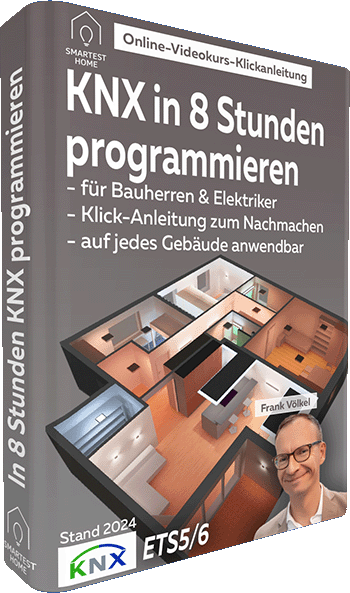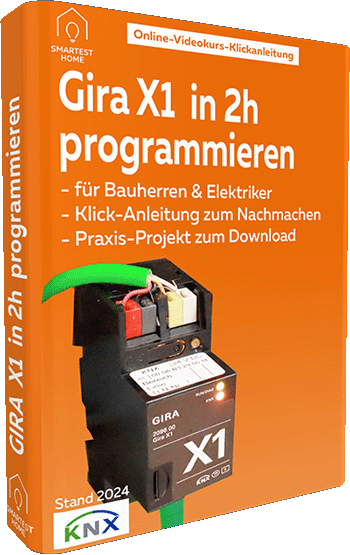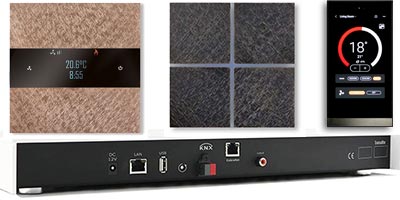The history of the Smart Home is still very young. Almost 60 years ago, networked living developed significantly from the commercially used area. Right from the start, the criteria that were important for a networked building were that it had to be based on open technical standards, easily expandable and future-oriented.
Inhaltsverzeichnis Historie Smart Home
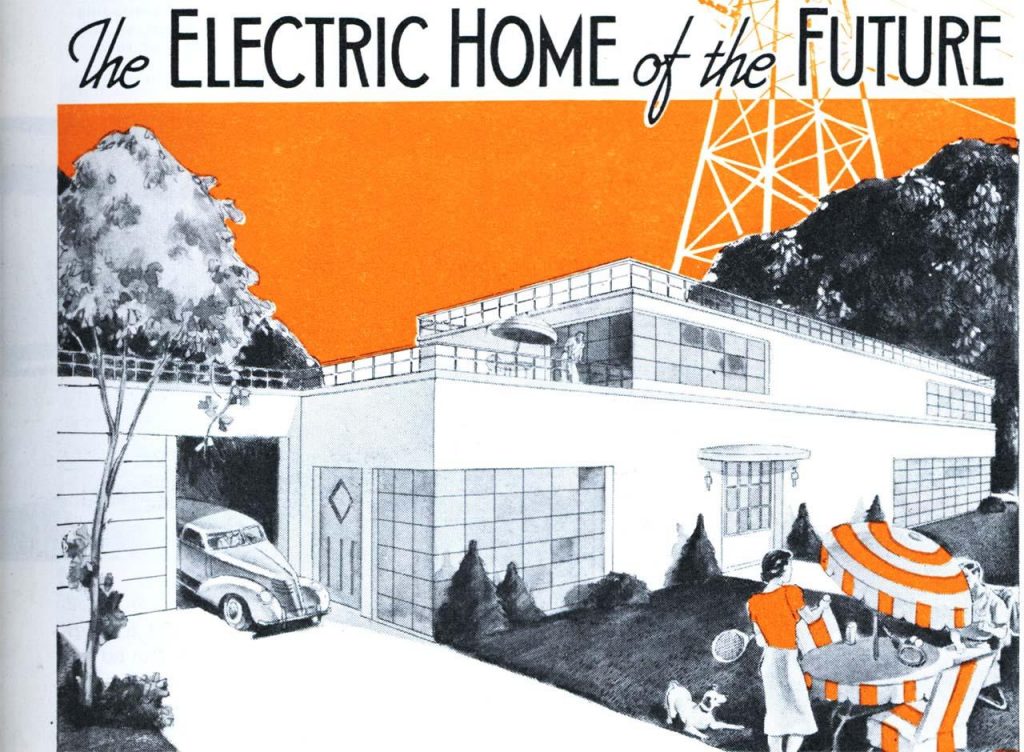
1939: Electric house of the future
The idea that a house should take over and act automatically and independently has been around for a long time. For example, in 1939 an article appeared in Popular Mechanics Magazine about “The Electric House of the Future”.
The author, George H. Bucher, describes a networked house in which doors would open automatically, guests would be personally greeted by the house via an intercom, and the lighting would change according to the needs of the occupants.
1963: First smart industrial buildings
The origin of truly networked buildings can only be found in the 1960s. At that time, fault reporting systems were implemented in larger building units for the first time using conventional electrical installations.
1973: Building with SPS central computer
The programmable logic controller (PLC) came onto the market in 1973 and has been used to control smart homes since then. It relies on a central unit that controls all of the connected peripherals.
1991: EIB - independent standard for houses/apartments
In 1991 the open EIB/KNX bus standard was founded. In 2002, a binding and manufacturer-independent KNX standard was adopted. This cross-trade networking of heating, cooling, ventilation, shading and lighting was initiated by Berker, Jung, Gira, Merten and Siemens. Open means that devices from different manufacturers can be networked with each other.
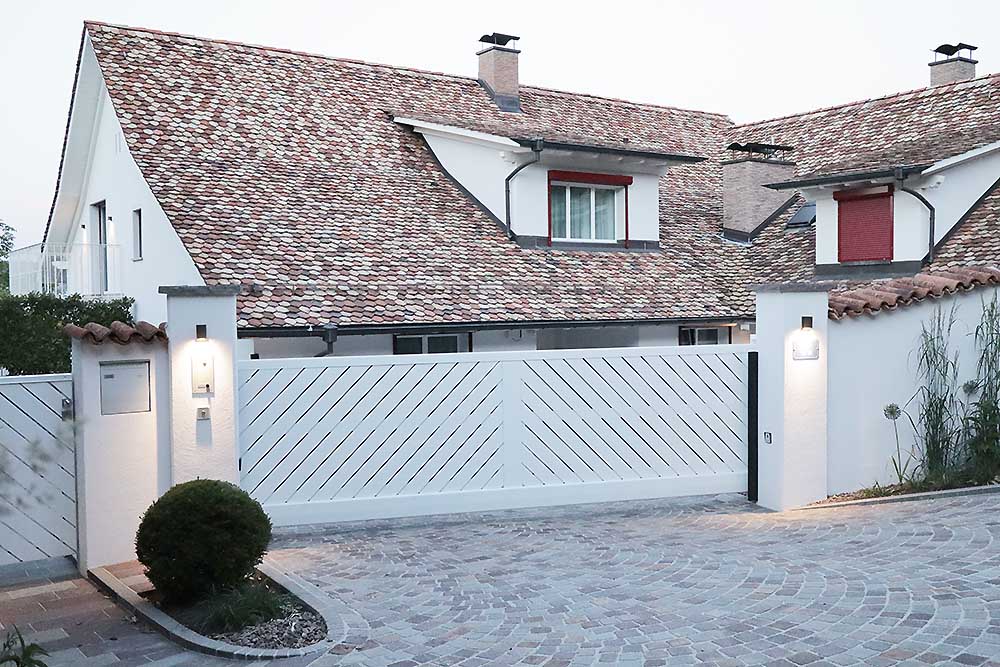
At the beginning of the 1990s, especially from 1991 to 1994, the distribution among the manufacturers was as follows: Berker mainly manufactured KNX switches, while Gira brought both KNX switches and KNX actuators onto the market. The companies Jung, Merten and Siemens also rely on KNX actuators and KNX buttons.
Right from the start, the aim of the collaboration was to create a manufacturer-independent system for networking and controlling any type of building, i.e. both commercial buildings and private homes. At that time there was no internet worth mentioning, although remote control was already possible at that time via telephone lines and the first modems.
2002: First upscale and luxury houses with KNX
In 2002, the EIB standard became the KNX standard. At that time, luxury houses and villas were equipped with KNX technology at high prices. Initially, only basic functions for controlling heating, ventilation, blinds/roller shutters and dimming lamps were available. The KNX software ETS2, which ran under Windows XP at the time and was not always stable, also dates from this period.
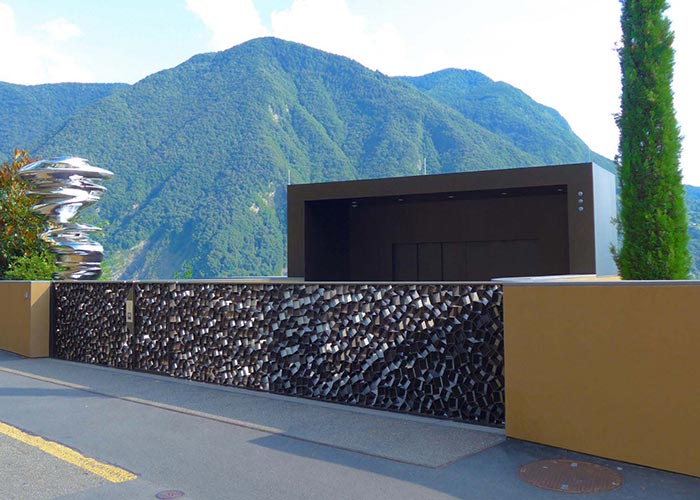
2005: House of the Present in Munich
Due to its flexible use and networked control, the house of the present, which was built for the Federal Horticultural Show in Munich-Riem in 2005, was a real further development of a conventional house. All electronic processes in the house could be controlled centrally for the first time.
For me (Frank Völkel) it was a standard, both technically and architecturally, to build and implement my private house – see also “Dream of the house as a machine” – in this way on the outskirts of Munich.
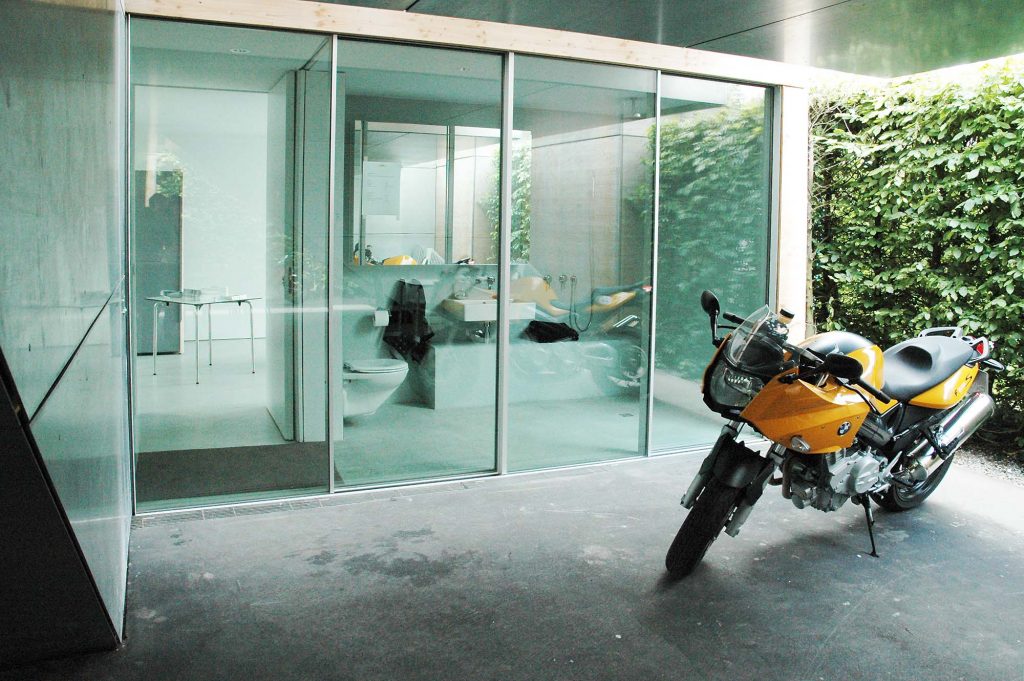
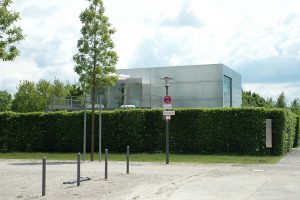
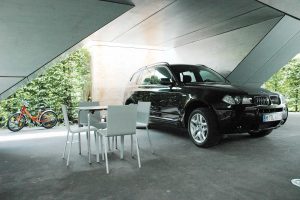
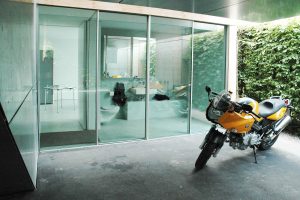
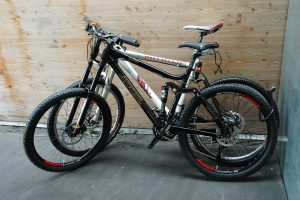
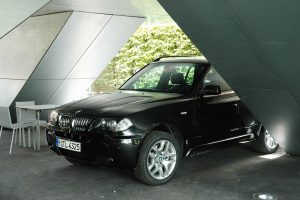
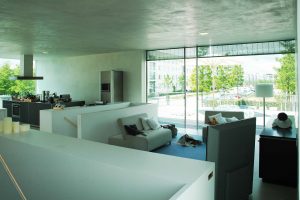
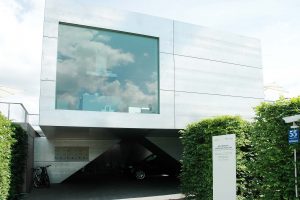
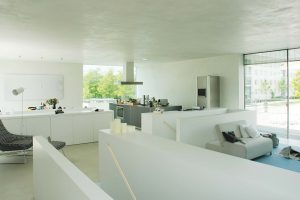

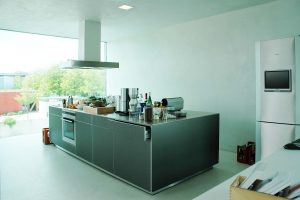
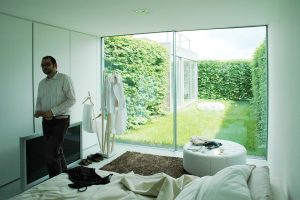
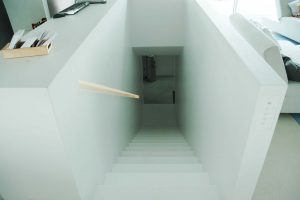
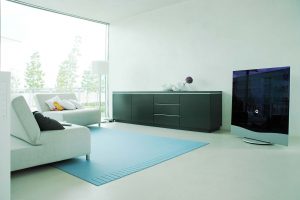

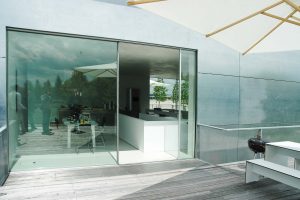
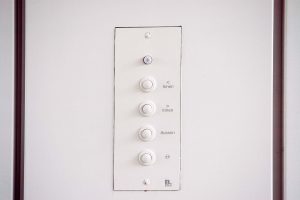
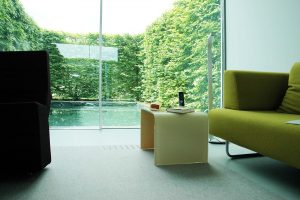
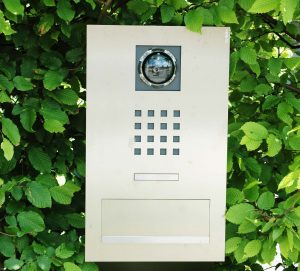
With complete networking via the KNX bus system, more and more demanding builders wanted to be able to take over the complete control of their house via graphic interfaces (visualization) on a touch screen on the wall.
From a technical point of view, in addition to the Gira Homeserver 3, there was also the Enertex EibPC, which could serve the high demands of a very special clientele. At that time, “smart home” was still a foreign word for most people in house construction and not even in sight.
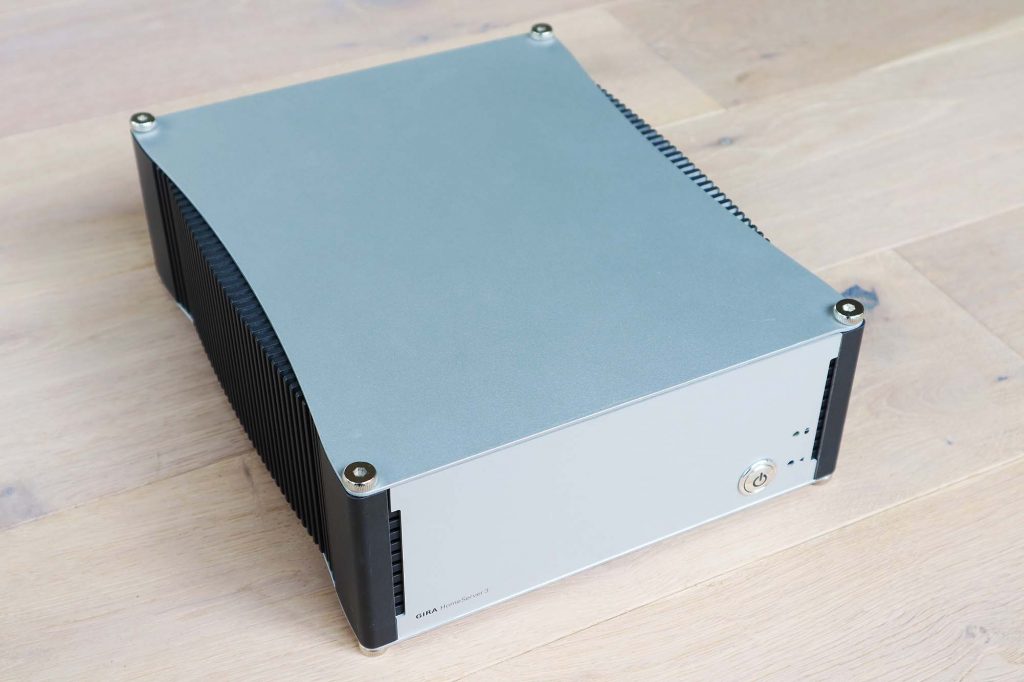
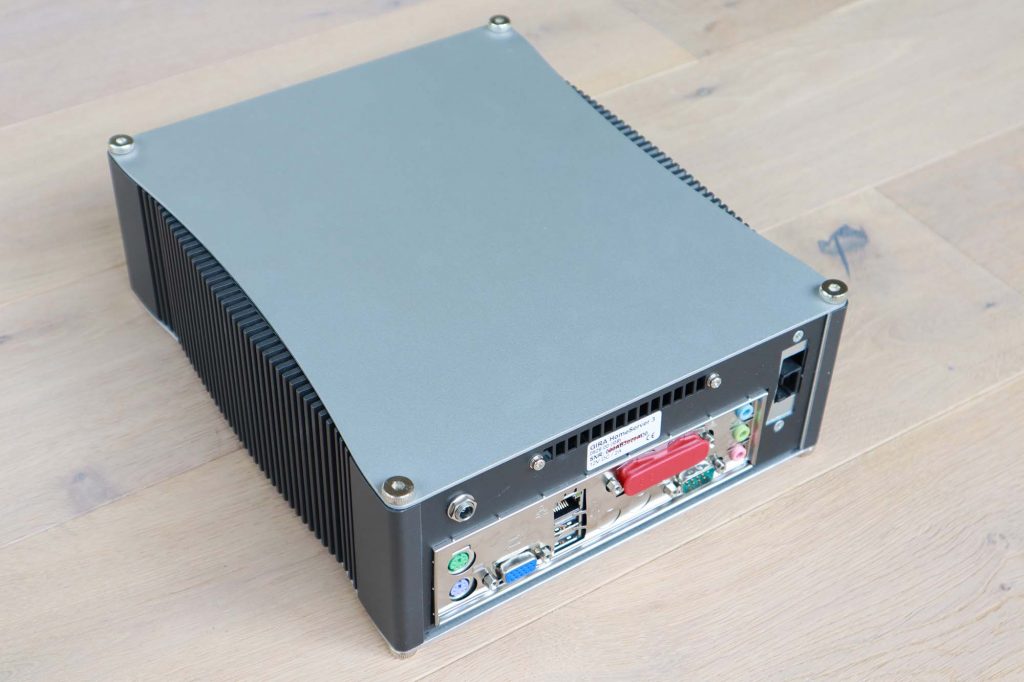
2008: House V in the district of Munich
The house with its striking futuristic shape is almost self-sufficient in its energy balance and is geared towards the needs of its residents. It is peppered with technical refinements: This includes a central technical shaft that contains all the lines – the nervous system of the house – for the electrics, controls, heating, ventilation and cooling.
In the cold season, the windows stay closed automatically, and a living room ventilation system ensures a good climate throughout the house. Blinds provide shade in summer and additional insulation in winter.
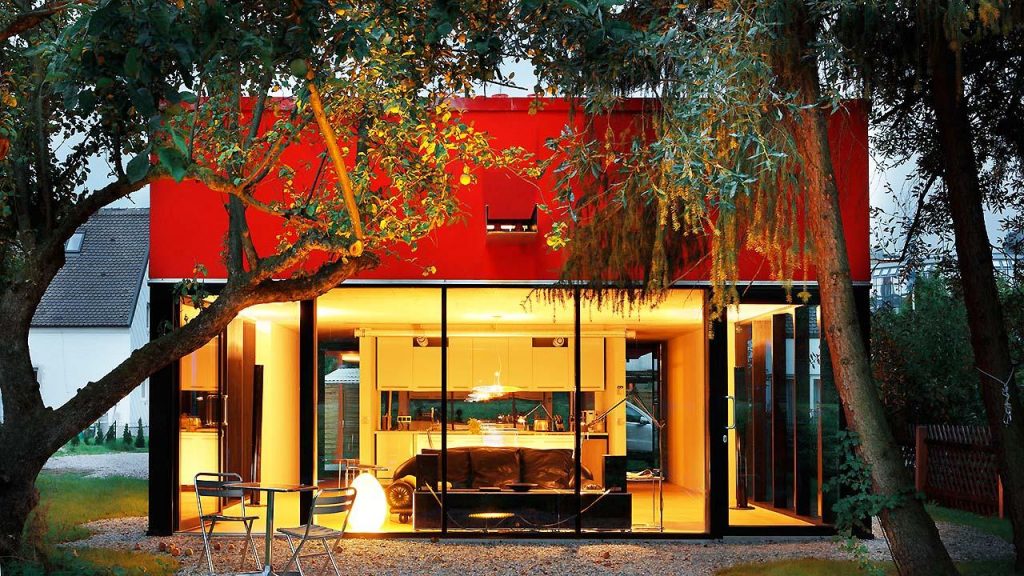
From 2006 onwards, a very small group of private individual builders in the German-speaking area (DACH area) set up their first KNX Smart Homes. Since there was no know-how or support from architects or craftsmen, the number of buildings erected was very small.
At that time, companies such as ABB, Berker, Gira, Siemens and Theben already had a large number of components and products for real Smart Homes on offer. The then newly released KNX software ETS3 brought significant improvements compared to the predecessor ETS2.
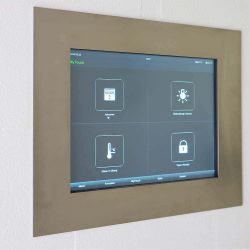
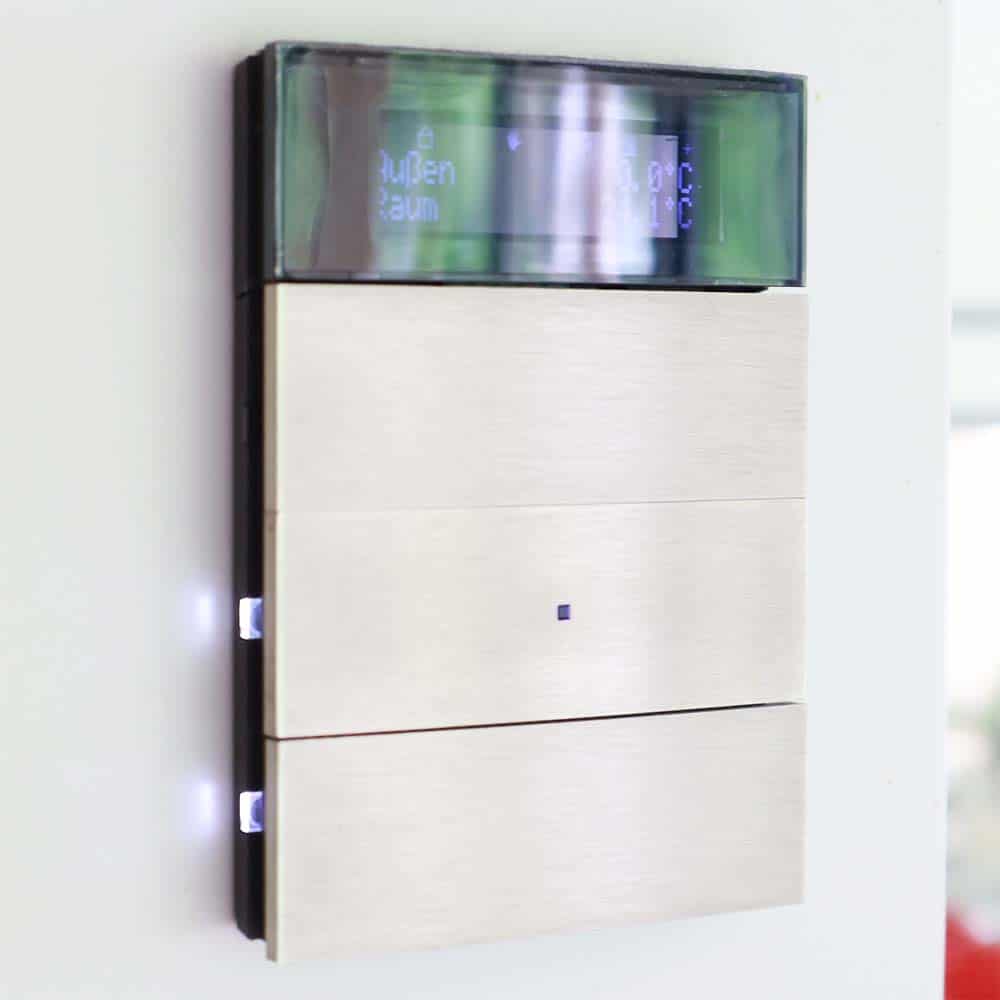
2015: Smart Home with KNX for all generations
In 2015 there were already more than a million connected buildings in Europe. The market now has more than 7,000 products from over 400 companies for networking apartments/buildings. Even older houses can be converted and upgraded to become a smart home.
Most connected homes are programmed with ETS4 (until 2012) and later with ETS5 software.
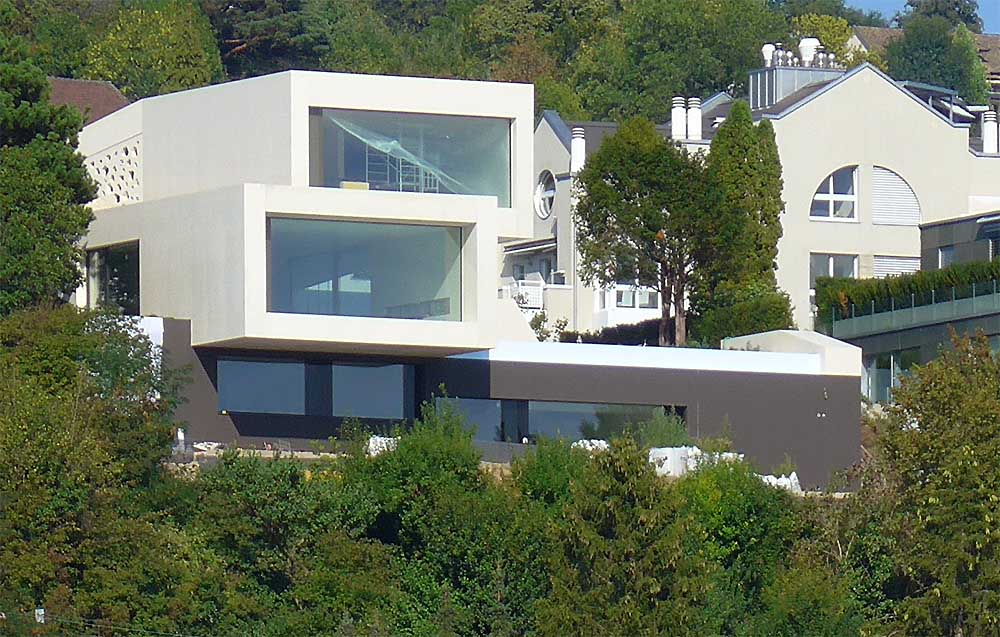
2021: Over 2 percent of single-family homes in new construction
Due to the sharp drop in prices for KNX components, the even larger selection among manufacturers and a high level of acceptance among builders and property developers, the smart home with KNX has now also established itself in the middle price segment of house construction.
Compared to proprietary systems from individual manufacturers (such as Loxone, LCN, Busch-Jaeger free@home, etc.), KNX is the only system for manufacturer-independent, long-term planning in new builds and the renovation of old buildings.
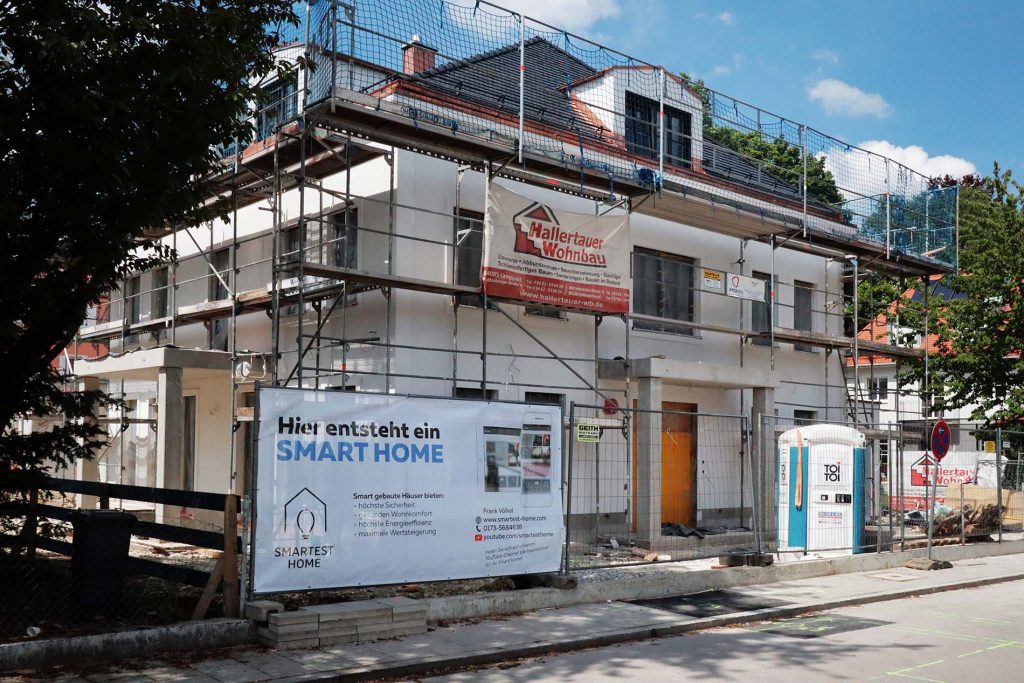
As in previous years, many builders lack an overview of the possibilities for smart homes in new builds. Therefore, despite the existing technical solutions and the cross-trade KNX standard, many houses are still being built without a network and without future viability in terms of extensions, updates and customization.
Electric doors/gates: All integrated and controllable
In the past 5 years, more has happened in the Smart Home area for new builds than in the previous 25 years! Every area in a building/house can now be connected and controlled via the central controller. This includes doors, windows, gates and also the outdoor areas such as the pool, carport and garden with plants and trees.
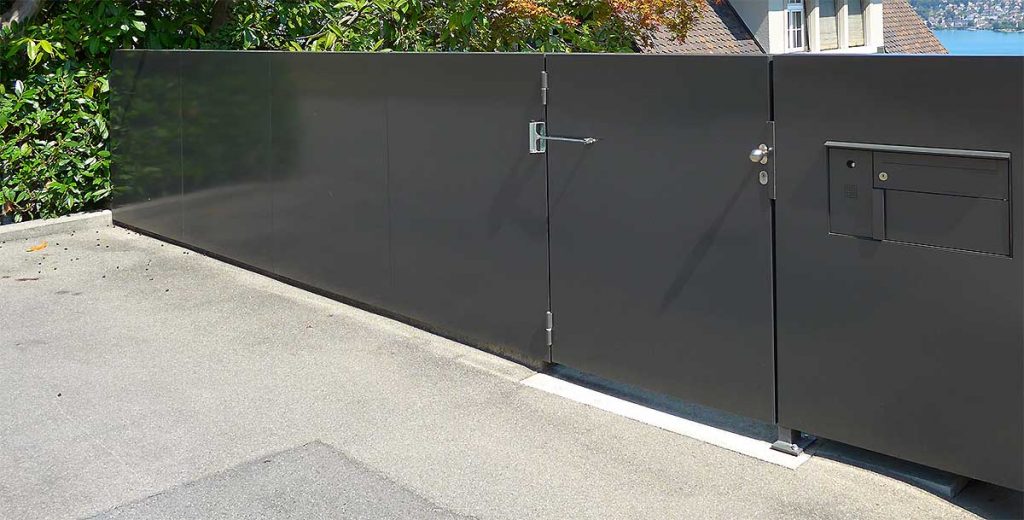
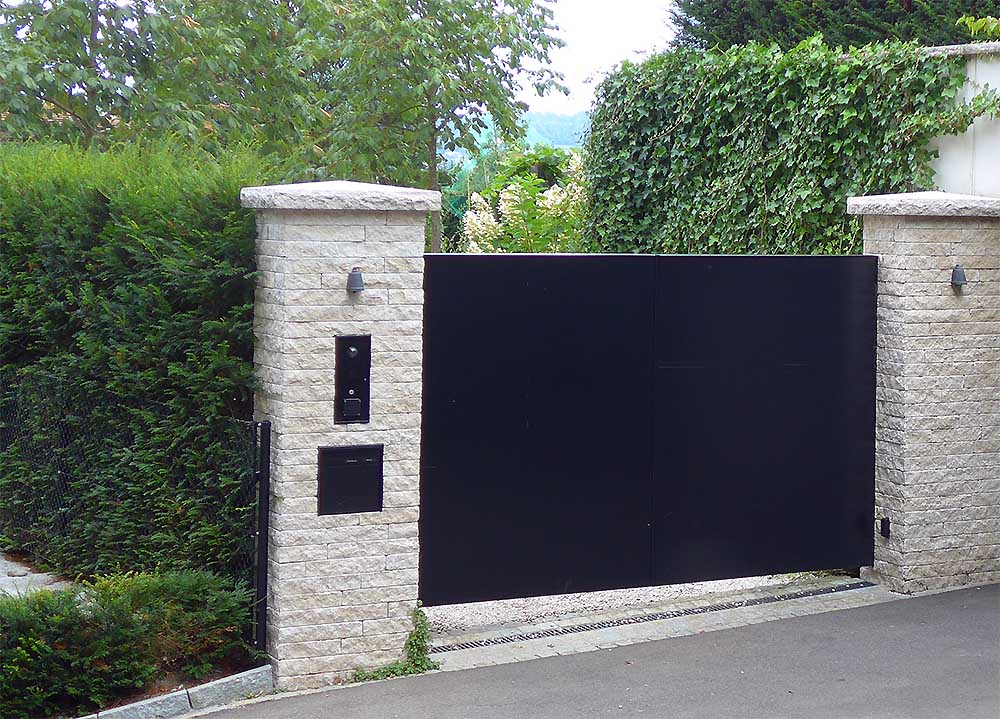
High-end smart homes 2023: houses and apartments
In the upscale and high-end segment of new builds and house renovations, KNX has established itself as the bus system and the DALI system for the complete lighting.
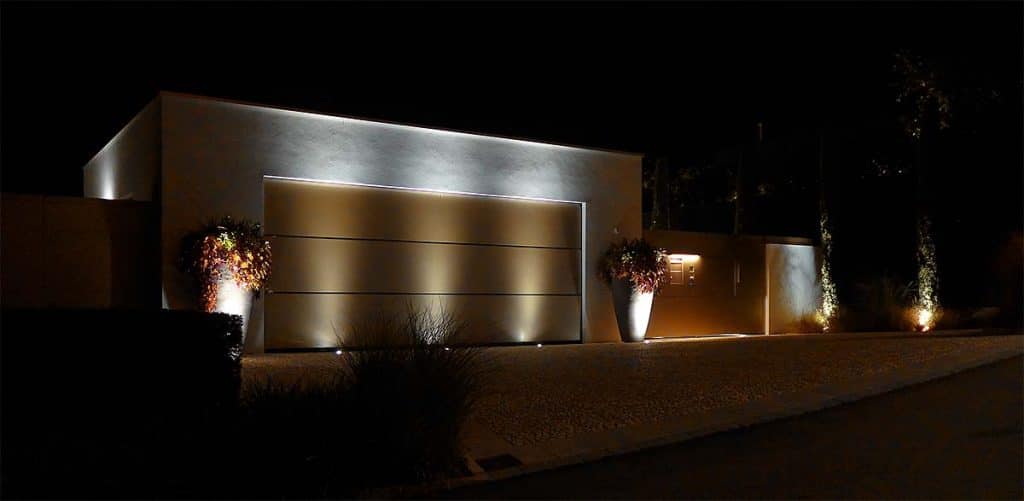
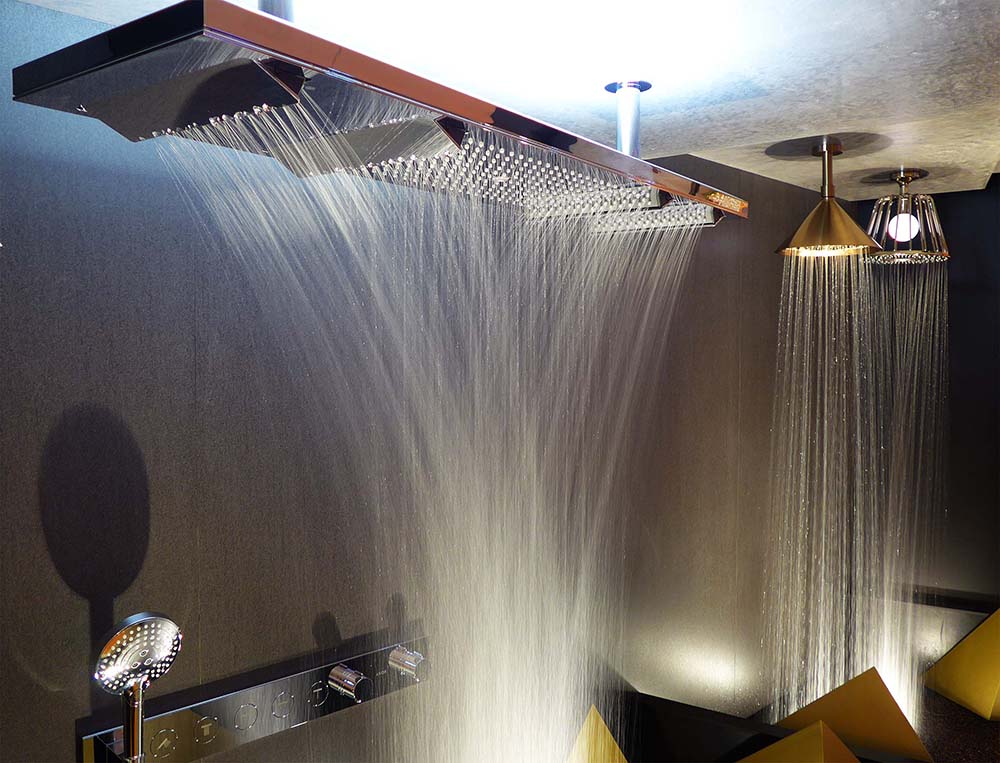
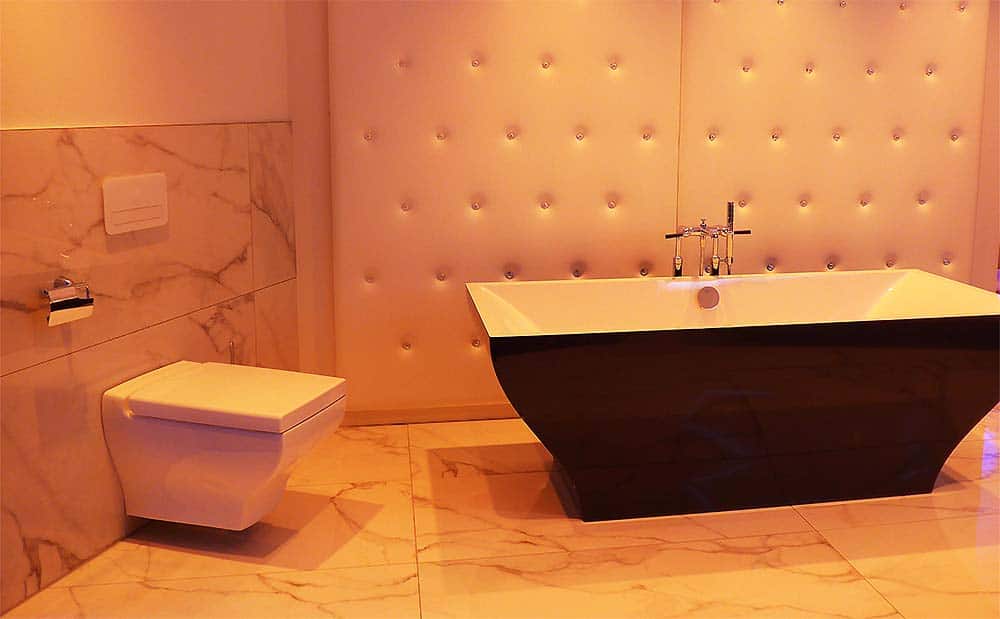
Encrypted radio transmission for retrofitting older buildings
With increasing networking in the smart home, the requirements for security are increasing. More and more devices and components with the “KNX Data Secure” standard are now appearing on the market. This standard prevents manipulation of the information sent by encryption.
